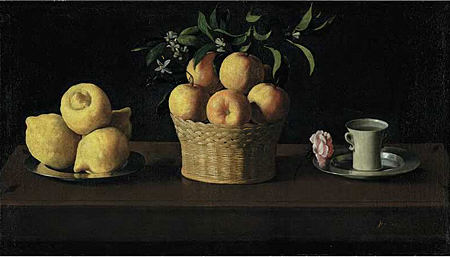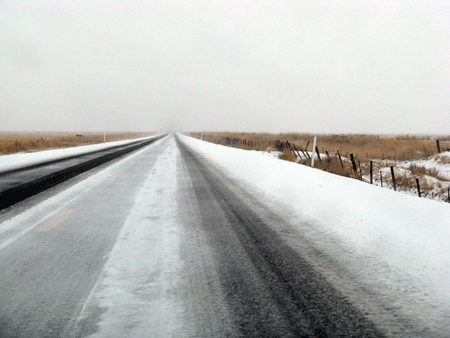Posted by Steve Durbin on March 22nd, 2010
This is about one of those laboratory experiments that just beg for word play in the article title. I resist. Perhaps it helps to be months removed from the publication date of the latest results; the bookmark would have been long since forgotten, except that I boldly left it at the top level of my bookmarks, where it reminded me daily of how much further behind I was falling.
Shigeru Watanabe has shown that pigeons can be taught not only to tell Monet from Picasso (PDF), but also to make seemingly more elusive distinctions, such as “good” art from “bad”. As reported in Science Daily:
more… »
Posted by June Underwood on November 1st, 2009
Posted by Steve Durbin on June 17th, 2009
How do we actually look at pictures, and how does that affect what we see in them? I started thinking about this again when I read about the Kuuk Thaayorre, an Aboriginal society in northern Australia. Lera Boroditsky (mentioned previously on A&P) reports on The Edge that their language and culture describe space and spatial relationships not in body-relative terms, but in absolute, land-fixed terms (I wonder if this is true for many Aboriginal langiages). When given a sequence of picture cards (showing a banana being eaten, or other obvious process) to arrange in time order,
Instead of arranging time from left to right, they arranged it from east to west. That is, when they were seated facing south, the cards went left to right. When they faced north, the cards went from right to left. When they faced east, the cards came toward the body and so on. This was true even though we never told any of our subjects which direction they faced. The Kuuk Thaayorre not only knew that already (usually much better than I did), but they also spontaneously used this spatial orientation to construct their representations of time.
more… »
Posted by Steve Durbin on May 1st, 2009
Frank Stella famously said “what you see is what you see.” He wanted to stay close to perception and not stray too far into literary or personal interpretations. My title, cribbed from an article in Science, refers not to the invasion of personal emotion, but about the recently experimentally observed influence of literal, tactile touch sensations on visual experience.
Stare at a waterfall long enough, and nearby stationary objects such as rocks and trees will seem to drift up. The optical illusion is called motion aftereffect, and it may trick more than just your eyes, according to a new study. When subjects watched a stationary stripe on a computer screen after a machine stroked their fingertips, the motion of the stroking created the illusion that the stripe was moving. The discovery demonstrates for the first time a two-way crosstalk between touch and vision, challenging long-held notions of how the brain organizes the senses.
I guess the neuroscience of what’s involved here may similar to the sight-sound synaesthesia we’ve discussed before (see comments discussions here and especially here). But this is the first I’ve heard of a tactile version of it. Has anybody out there had experiences along those lines? Other than seeing stars when you bump your head?
Posted by June Underwood on April 18th, 2009
As Steve noted not long ago, perception — how, as well as what, we see and record — is prime territory for this group. Some weeks ago I wrote about painting in the desert, the Great Basin to be more precise, and, even more specifically, the Amargosa Plain just outside of Death Valley.
After having spent 6 weeks in the desert, perceiving and painting, mostly plein air, I am now back in Portland reading about desert perception in William L. Fox’s The Void, the Grid, and the Sign.
Fox has spent most of his life in and around a variety of deserts and back-of-nowhere lands, but in The Void he’s primarily concerned with the Great Basin, that large space between the Rockies and the Sierras, where water flows in, but never out, where there is no river coursing to the sea. He says that outside of Afghanistan, this area contains the most mountain ranges (316) in the world, but there are also 90 basins, places where what little water exists is captured between ranges and sinks or evaporates. The best known of these basins is perhaps Death Valley, although that lies outside Fox’s attention. The place I was painting, the Amargosa Plain, is also just outside his wide-ranging travels. However, much of what he says is apropos of the Amargosa and Death Valley.

Death Valley at the Beatty Cut-off, March, 2009
more… »
Posted by Steve Durbin on April 9th, 2009
One of our shticks at A&P (in a good way) has been our interest in learning about perception through findings in neuroscience, psychophysics, and related fields, as well as through introspective observation of our own seeing and art-making. Though this interest is not unique to A&P, it certainly isn’t very common, either. So I was delighted to come across two examples in a day of cognitive science finding mention in current art criticism at a rather higher level of visibility. It was especially nice that these references truly illuminated the discussion of the art viewer, in one case, and the artist, in the second.

more… »


